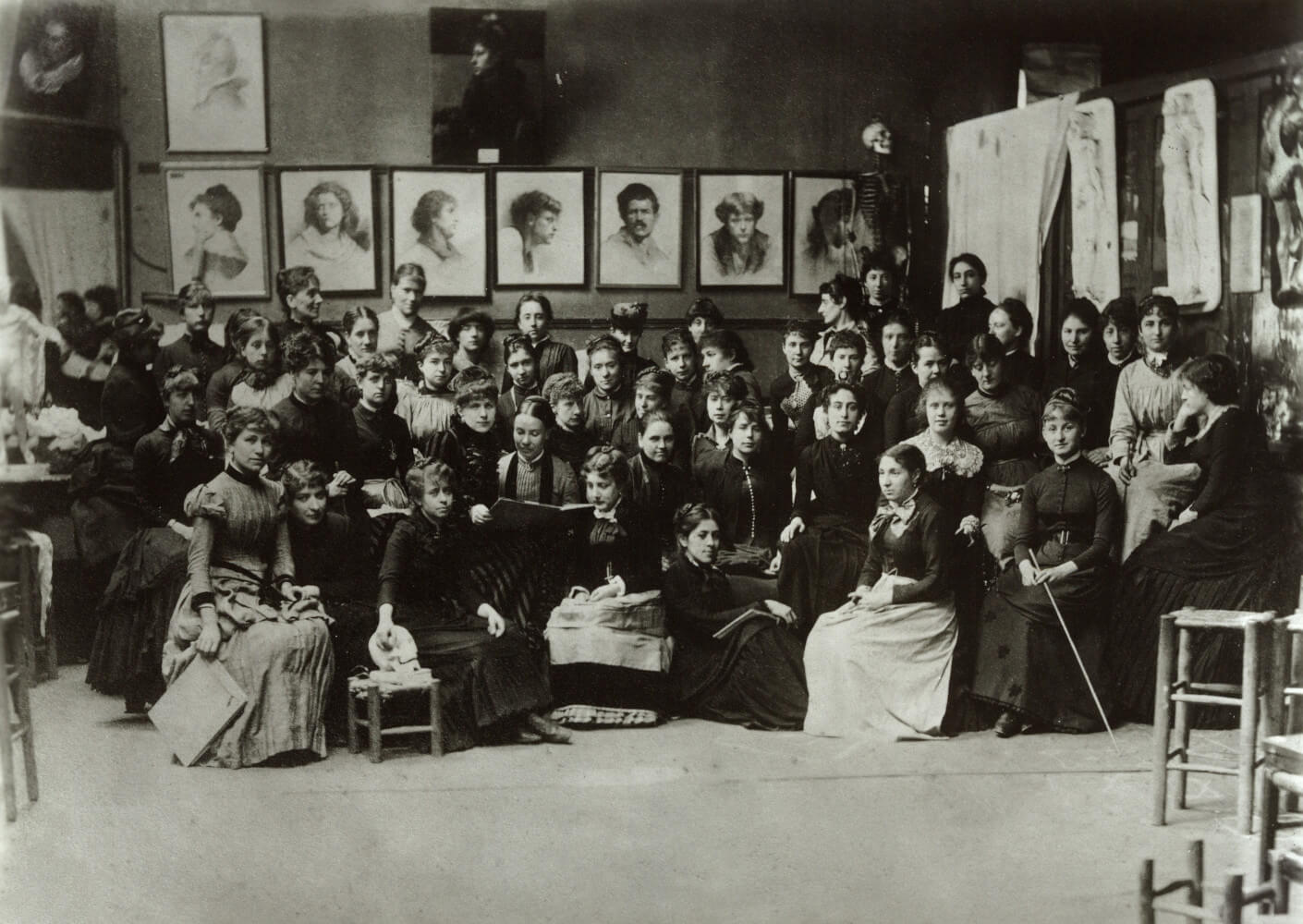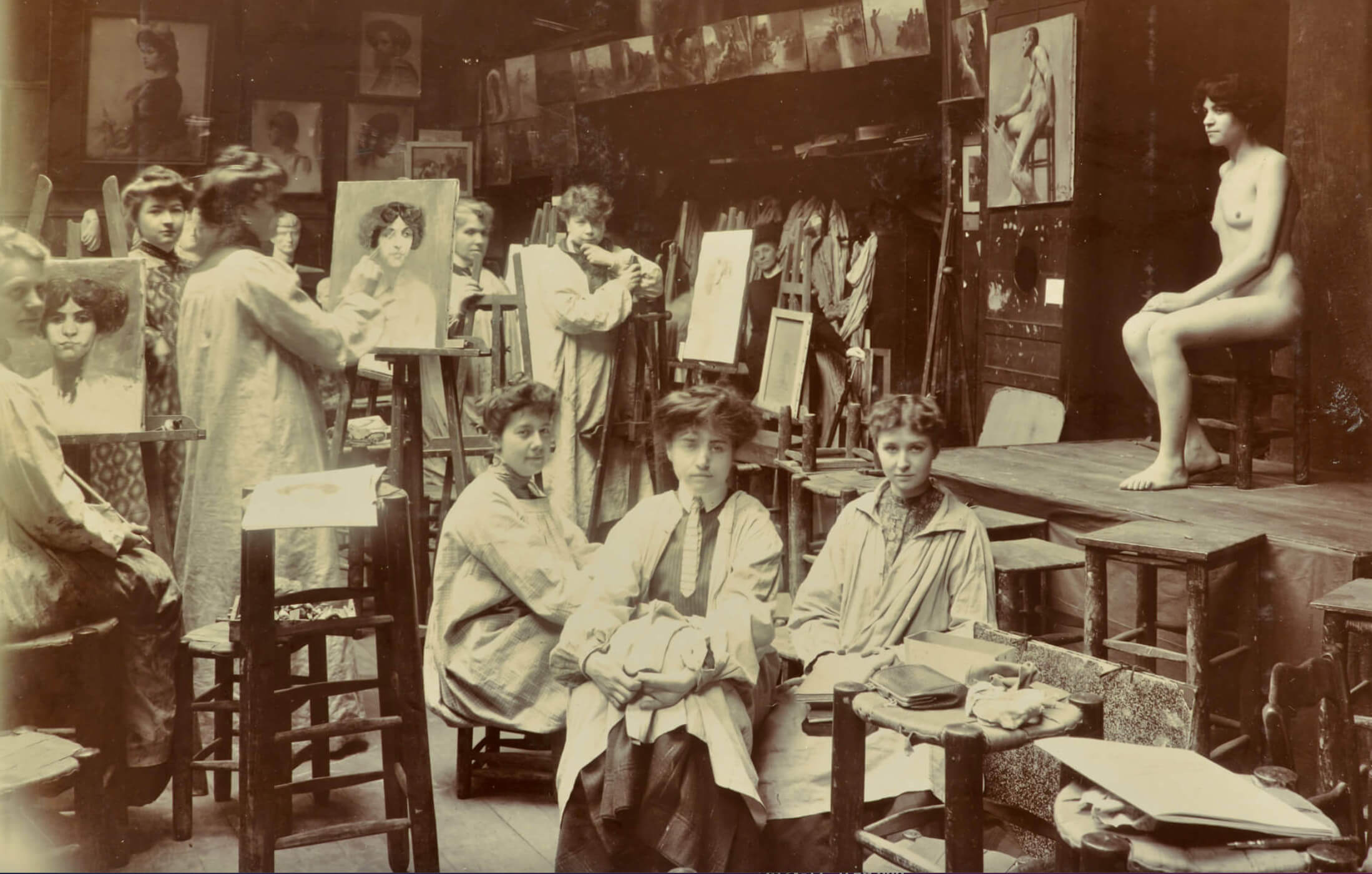Step into the bustling streets of 19th-century Paris, where the French academic tradition reigned supreme in the world of art education. Rooted deeply in the prestigious École des Beaux-Arts, this tradition emphasized a rigorous curriculum focused on classical techniques, historical subjects, and adherence to established conventions. Yet, behind the grand façade of the École lurked a stifling atmosphere, where the creative voices of those daring to challenge its conventions were silenced. Moreover, such a renowned art institution enforced stringent policies concerning the admission of women and foreigners seeking to enroll. Women were not recruited by the school until as late as 1897, and even then, they encountered substantial obstacles to entry. Regarding foreigners, although there was no explicit policy against their admission, the École des Beaux-Arts nonetheless favored French citizens and subjected foreigners to challenging French language exams. It was against this backdrop that a relatively obscure painter’s studio, known later as Académie Julian, emerged as a haven of artistic freedom and a bustling center for figure painting in 19th-century Paris. But what’s the story behind this remarkable art studio that changed how people painted and drew from life models in 19th-century Paris?

Académie Julian was established in 1867 by Rodolphe Julian. Sent by his father, a tobacco merchant, young Julian ventured to Marseille to work as a clerk in a bookstore. Possessing a natural talent for drawing, he eventually made his way to Paris. Under the mentorship of two professors Léon Cogniet and Alexandre Cabanel at the École des Beaux-Arts, Julian honed his life drawing skills, although he never formally enrolled in classes. Starting in 1863, Julian began exhibiting his work at the Salon, a prestigious art event held by the Academy of Fine Arts in Paris. Consequently, he converted his residence into a painting studio but chose to admit students to supplement his income as an artist. The atelier, housed in a small space in the Passage des Panoramas, provided students with access to life models and correction sessions with renowned artists. Over two decades, Julian expanded the academy, opening nine new ateliers across Paris!
Julian’s philosophy of inclusivity welcomed artists of all backgrounds and nationalities, in stark contrast to the École des Beaux-Arts. His school drew students from far-flung corners of the globe, including Brazil, Australia, Canada, and of course the United States. The academy organized competitions and emphasized portrait training as a promising avenue especially for female artists, offering them opportunities for success in a genre that enjoyed popularity among diverse clientele. It swiftly gained renown, serving as a stepping stone for those aiming to showcase their work in the Salon, given that it employed multiple professors on the jury.

Unlike the École des Beaux-Arts, the Académie Julian welcomed women who desired to learn figure painting and drawing, at a time when formal art education for them was uncommon. The academy initially offered mixed-gender classes, but recognizing the discomfort many women experienced while working alongside male colleagues, it introduced a female-only course, which rapidly gained popularity. Still, women were required to pay double the fees compared to men, a disparity partially rooted in the belief that they did not have to earn the money themselves. Despite the higher fees, the number of female students grew rapidly, reaching four hundred by 1885. Contrary to common opinion, Académie Julian was not the only school open to women, as Julian’s teacher, Cogniet, accepted female students in his atelier as well.
At the heart of Académie Julian’s ethos was the Atelier Libre movement, which provided a space for artists to work from life models without the constraints of academic norms. This movement, born out of the atelier’s progressive spirit, encouraged self-expression, shaping the artistic landscape for generations to come. Should a student prefer not to receive corrections, they had the option to conceal their work during the professor’s visit.

The legacy of the Académie Julian extends far beyond the 19th century, influencing generations of artists and contributing to the democratization of art education in France. Its impact resonates in the contemporary art world, where some ateliers, like ours, continue to embrace the principles of artistic freedom, inclusivity, and collaboration championed by Julian.